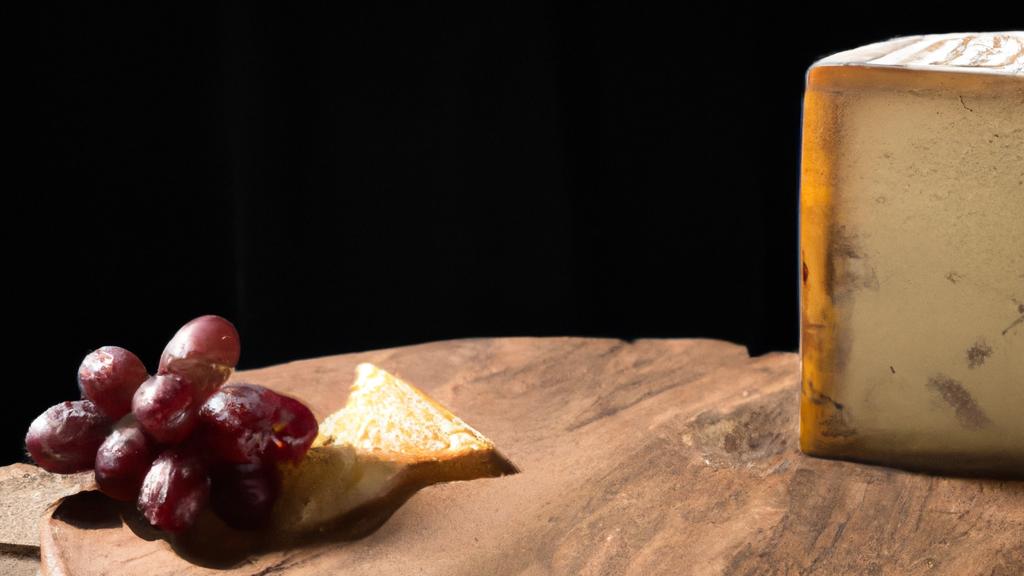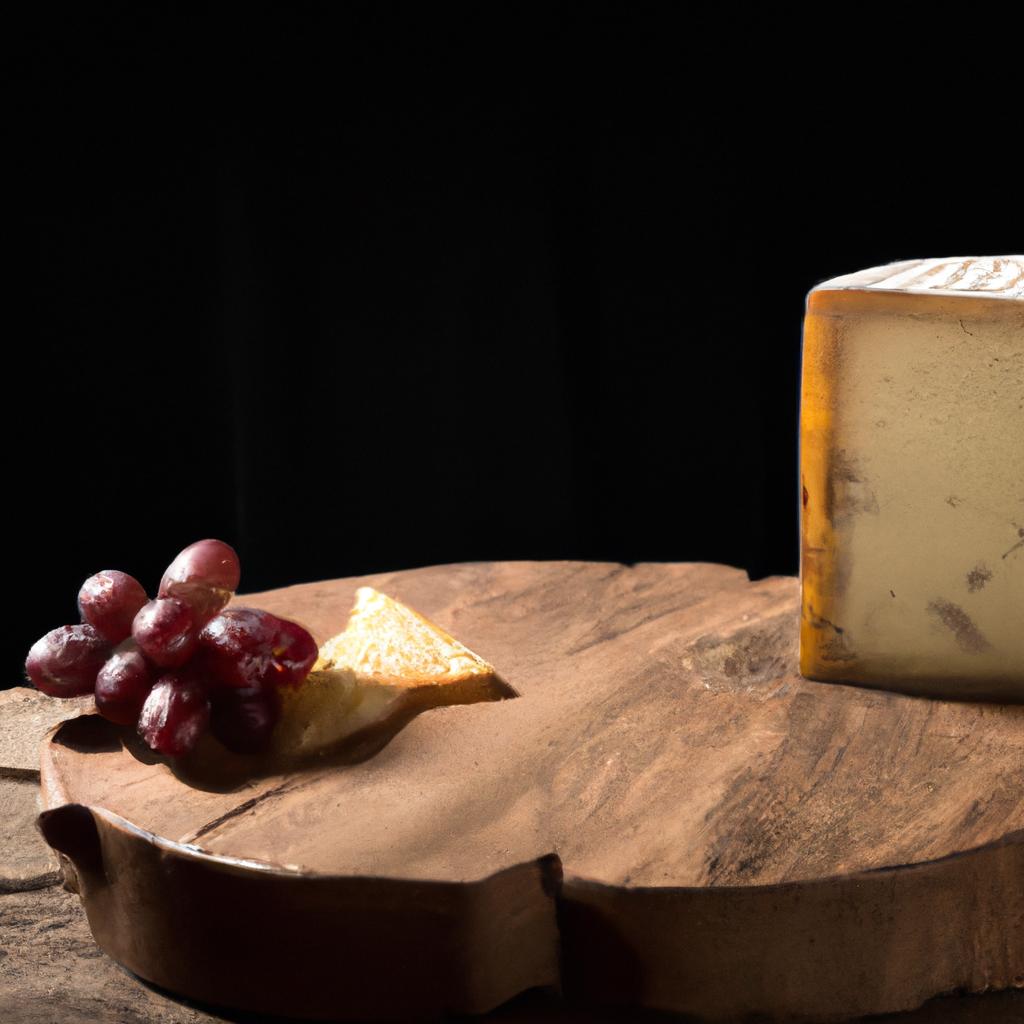
A cherished ingredient in Brazilian cuisine, Queijo Catupiry is one of the country’s oldest and most storied cheeses. From its introduction in 1911 by the Portuguese immigrants Mario and Isauro Silviera Pinto, Queijo Catupiry has epitomized Brazil’s culinary spirit, creating a vibrant buzz among gourmands for its refinement and versatility. This cheese is renowned for its velvety texture, a result of its complex production process where it undergoes a series of pasteurization, maturation, and fermentation steps.
Queijo Catupiry, often shortened to Catupiry, is a soft, almost soupy cheese with a rich, creamy flavor. It’s distinctive for its mild intensity, which allows chefs to incorporate it into a wide range of dishes without overpowering the overall flavor. Its versatility and ability to blend so seamlessly with other ingredients have expanded its usage beyond traditional Brazilian cuisine. It now graces international menus, showing up in anything from pizza toppings to enhancing the flavor of classic meat stews.
- Texture and Flavor: Enveloped in a thin, white skin, the interior reveals a soft, spreadable cream with subtle sour notes. While the flavor of Catupiry can change slightly depending on its age, the cheese generally has a mild and attractive, slightly tangy flavor.
- Versatility: Not just a delicious snack on its own, Catupiry is a culinary chameleon, thanks to its moderate flavor. Its smooth, creamy consistency makes it ideal for baking and cooking, especially enhancing dishes like pastries, pasta, risottos and even desserts like cheesecakes.
- Cultural Importance: Catupiry is more than a cheese; it is a symbol of Brazilian identity. It is part of the country’s intangible heritage and holds a long and special place in the hearts of Brazilian people, further cementing its status as a culinary gem.
While its popularity has led to many imitations, the time-honored recipe and unique fermentation process employed in making authentic Queijo Catupiry is what sets it apart. True Catupiry is marked by a unique lactic scent, with a clean and homogenous cream where coloures vary from white to yellowish; it is made of cow’s milk, with machine processing ensuring an exceptional level of consistency from batch to batch. It’s an intrinsic part of Brazil’s culinary scene and mirrors the perfect balance between tradition and the push towards innovation that characterizes the Brazilian food industry.
Welcome to our quiz on the topic of ‘Queijo Catupiry’! Discover how much you know about this delectable Brazilian cheese and its significance in South American cuisine. Are you ready to put your cheese knowledge on the test and gain some more insights into this Brazilian specialty? Let’s start!
Queijo Catupiry, a soft and creamy cheese hailing from Brazil, is lauded for its unique taste, texture, and versatility. Invented in 1911 by the Italian immigrant Mario Silvestrini, Catupiry quickly gained fame and cemented its place in Brazilian gastronomy. This cheese variety has become one of the leading fresh cheeses in Brazil, and it is increasingly recognized and enjoyed beyond the Brazilian borders.
Queijo Catupiry diverges from standard cheeses due to its soft, almost liquid consistency. It boasts a mild and slightly sweet taste that brings depth and richness without overpowering dishes. This cheese is renowned for its melting properties, creating a smooth and creamy texture when heated. Aged for a minimum of 14 days, Catupiry embarks a slight tartness that complements its sweet undertones wonderfully, and provides an interesting juxtaposition in various culinary creations. It has low sodium content which makes it a healthier cheese option and its rich, creamy texture is achieved without the inclusion of any preservatives.
This cheese is used in manifold ways: as a pizza topping, in pasta dishes, as a filling for pies or pastries, and even as a decadent ingredient in desserts. One of the most popular use of Catupiry in Brazil is in a dish called Frango com Catupiry (chicken with Catupiry), where the cheese is used to enhance the savoriness of the chicken. There are also varieties of Catupiry available on the market:
- Traditional Catupiry: This is the classic version of Catupiry. It has a smooth, creamy texture and a mild, slightly sweet flavor. It can be spread on bread or used as a base for other dishes.
- Requeijão Catupiry: This is a spreadable version of Catupiry cheese. It is even softer than the original and is often used as a spread or a dessert filling.
- Catupiry with Pepper: This version has the addition of pepper, adding a spicy kick to the creamy and sweet Catupiry base. It can turn a simple cracker into an exciting and flavorful snack.
As a rich cream cheese, Queijo Catupiry delivers a delightful versatility that allows both traditional and adventurous food enthusiasts to experiment with flavors and textures. Truly, this Brazilian cheese breathes character and offers ample room for culinary creativity.
Brazil, the land of samba, football, and beautiful beaches, is also home to a delectable culinary treasure known as Queijo Catupiry. This creamy and indulgent cheese has captured the hearts of both locals and food enthusiasts worldwide. Produced mainly in the state of São Paulo, this cheese has become an integral part of Brazilian gastronomy.
Queijo Catupiry is a fresh, soft cheese with a uniquely smooth texture. Unlike many other types of cheese, it is made from cow’s milk and enriched with butter. This combination creates a rich, creamy, and slightly tangy flavor that is loved by many. The cheese has a mild aroma, which enhances its delicate taste.
The origins of Queijo Catupiry can be traced back to 1911 when it was first created by Italian immigrant Mário Silvestrini in the town of Catupiry in São Paulo. Over the years, the cheese gained popularity and is now widely enjoyed and recognized across Brazil.

Although Queijo Catupiry is produced throughout Brazil, it is most famous in the states of São Paulo and Minas Gerais. The traditional method of making this cheese involves using only fresh milk from local farms, ensuring the highest quality. The cheese is then crafted by skilled artisans who carefully mold and age it to perfection.
Whether spread on bread, used as a filling for pastries, or melted over traditional Brazilian dishes, Queijo Catupiry adds a velvety and luxurious touch to any culinary creation. Its versatility and outstanding taste make it a beloved ingredient in both savory and sweet dishes.
- A fresh, soft cheese made from cow’s milk.
- Enriched with butter for a creamy and indulgent flavor.
- Mild aroma and delicate taste.
- Produced mainly in the state of São Paulo, Brazil.
- Made using traditional methods and fresh milk from local farms.
- Highly versatile and used in both sweet and savory Brazilian delicacies.
- Brazil is known for its wide array of unique cheeses, with Catupiry being one of the most beloved ones.
- Introduced in the early 20th century, Catupiry is now a staple in many Brazilian households.
- From pizzas to coxinhas, Catupiry is frequently paired with a variety of ingredients to create mouth-watering dishes.
- Despite its Italian origins, Catupiry has become distinctly Brazilian over the years.
- Branded as a ‘superbrand’, Catupiry has managed to maintain its popularity through constant quality assurance and brand loyalty.
- With its delicate and creamy texture, Catupiry is notably different from many other Brazilian cheeses that are typically firm and strong-flavoured.
Queijo Catupiry, a Brazilian cheese that boasts a delightfully smooth and creamy texture, has become a staple ingredient in numerous recipes that diverge from traditional Brazilian cuisine. Its unique, mild flavour allows this cheese to blend effortlessly with other ingredients, thereby enhancing the overall taste of any dish. Let’s take a look at a couple of mouth-watering recipes using the versatile Queijo Catupiry.
Ingredients:
- 1 baguette
- 200g sun-dried tomatoes
- 200g Queijo Catupiry
- Fresh basil for garnish
- Extra virgin olive oil
- Salt to taste
Instructions: 1. Slice the baguette into half inch thick pieces and toast both sides. 2. Spread a substantial amount of Queijo Catupiry onto each slice. 3. Top with sun-dried tomatoes and sprinkle with a pinch of salt. 4. Drizzle extra virgin olive oil over the bruschettas and garnish with fresh basil leaves.
Familiar yet undeniably unique, the Catupiry and Sun-dried Tomato Bruschetta will certainly be an unforgettable addition to your dining table. The combination of the creamy Catupiry with acidic sun-dried tomatoes, nested on a toasted baguette slice, creates the perfect fusion of textures and flavours.
Ingredients:
- 1 pizza dough
- 200g cooked chicken, shredded
- 250g Queijo Catupiry
- 1 onion, thinly sliced
- 1 tomato, thinly sliced
- 100g corn kernels
- Olive oil
Instructions: 1. Roll out the pizza dough to your preferred thickness. 2. Spread a generous layer of Queijo Catupiry onto the dough. 3. Top the pizza with shredded chicken, thinly sliced onion, tomato, and corn kernels. 4. Bake in a preheated oven at 220°C (428°F) for 15-20 minutes or until the crust is golden brown. 5. Drizzle with olive oil and serve.
This Chicken Catupiry Pizza, with its creaminess and mild, subtle flavours, is a true cheese lovers’ delight. The harmonious balance of the tender chicken, sweet corn, and savory Catupiry cheese guarantees a culinary experience that transcends the norm.
The Brazilian Queijo Catupiry is a soft, creamy and versatile cheese that has become a significant part of Brazilian cuisine since its creation in 1911 by an Italian immigrant couple. Its smooth texture and slightly tangy taste make it an excellent ingredient for both savory and sweet dishes. The flavor profile of Catupiry is uniquely subtle, slightly salty with a mild hint of earthy and tangy undertones, making it a perfect pairing partner for a variety of drinks and foods.
When it comes to wine, Queijo Catupiry showcases its best personas with white wines like Chardonnay, particularly those from the New World regions like Australia, Chile, and California. The full-bodied, creamy nature of a well-oaked Chardonnay mirrors Catupiry’s creamy texture while its inherent citrus notes complement the tanginess of the cheese. In addition, a light to medium-bodied red wine like a Pinot Noir can also create a harmonious blend with Catupiry. The cherry and clove flavors in the wine play well with the slight earthiness of the cheese, while the gentle tannins help cut through its creamy texture.
In terms of food pairings, Catupiry’s malleable nature allows it to blend seamlessly in a myriad of dishes. Traditional Brazilian dishes showcasing the cheese as a star ingredient include ‘Pão de Queijo’ (cheese bread), ‘Romeu e Julieta’ (guava paste and cheese dessert) and pizza ‘com Catupiry’. It also works fantastically in snacks, such as empanadas or coxinhas. Here are some versatile recommendations:
- Use as a base for a divine cheese sauce to lavish over grilled vegetables or steak.
- Spread it over crackers with a touch of sweet chilli jam for a quick appetizer.
- Blend it with roasted garlic and herbs for a luscious bread spread.
- Dissolve in soups or pasta for an additional creaminess.
- Swirl it through guava paste and bake till golden for a Brazilian twist on a fruit and cheese tart.
This remarkable cheese, with its velvety texture and outstanding adaptability, has earned its place not only on the top shelves of cheese connoisseurs but also amidst the day-to-day of casual cheese lovers. The pairing ideas mentioned above are a mere sip and nibble in the grand banquet that is cheese gastronomy, inviting you to experiment and discover your own delightful combinations.
Queijo Catupiry is a delicious and creamy Brazilian cheese that is loved by cheese enthusiasts around the world. It is made from cow’s milk and has a smooth, creamy texture with a slightly tangy flavor. While Queijo Catupiry is unique in its own right, there are other cheeses that possess similar characteristics and can be enjoyed as alternatives. Here are a few similar cheeses to explore:
1. Ricotta: Ricotta is an Italian cheese known for its creamy, slightly sweet flavor. It is made from the whey leftover from the production of other cheeses, such as mozzarella. Ricotta has a light, airy texture that is reminiscent of Queijo Catupiry. It can be used in various recipes, such as pasta dishes, dips, and desserts.
2. Boursin: Boursin is a French cheese that shares some similarities with Queijo Catupiry. It has a creamy and spreadable texture, making it a popular choice for spreading on crackers or bread. Boursin is typically seasoned with herbs and garlic, giving it a flavorful punch. It can be enjoyed as a standalone cheese or incorporated into recipes such as stuffed mushrooms or pasta fillings.
3. Fromage Frais: Fromage Frais is a fresh French cheese made from whole or skimmed milk. It has a smooth and creamy texture, similar to Queijo Catupiry. Fromage Frais is a versatile cheese that can be used in both sweet and savory dishes. It can be added to desserts like cheesecake or used as a topping for fresh fruit. In savory dishes, it can be used as a base for creamy sauces or blended into dips.
4. Cream Cheese: Cream cheese is a well-known and widely available cheese that can be a suitable alternative to Queijo Catupiry. It has a similar creamy and spreadable texture, although the flavor may be milder. Cream cheese is versatile and can be used in a wide range of recipes, from savory cheesecakes to creamy pasta sauces.
When seeking alternatives to Queijo Catupiry, these cheeses offer similar textures and characteristics that can be enjoyed in various culinary creations. Whether you are looking to substitute in a recipe or explore new flavors, these cheeses can provide a delightful experience for cheese lovers.



